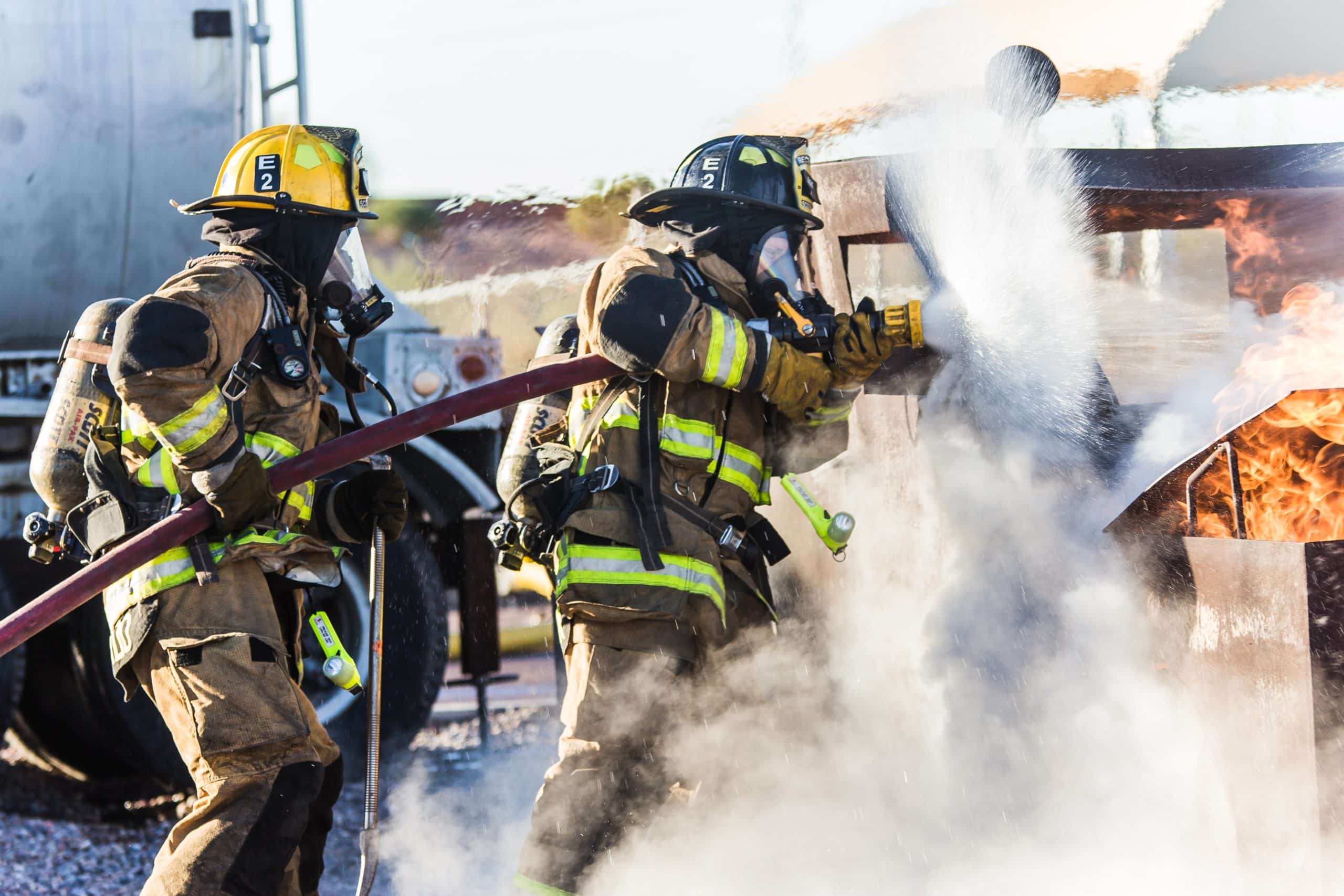
PFAS Chemicals: Occupational Hazard For Fire Fighters
Firefighters are exposed to many chemical hazards. One such hazard which is receiving growing attention is a class of chemicals known as PFAS (per- and polyfluoroalkyl substances). These substances are also called “Forever Chemicals” because they have very stable molecules which persist for long periods of time in the environment and in living systems. PFAS chemicals have been associated with a number of health problems, including testicular and kidney cancers, reduced immunity, thyroid problems, and reproductive harms.
Research has revealed several ways in which firefighters have been, and in some cases, continue to be, exposed to PFAS chemicals in their work:
- PFAS chemicals were widely used in aqueous film forming foams (AFFF) used to fight fires.
- Firefighters have been exposed to PFAS chemicals from burning materials such as water and stain resistant carpets and upholstery which contained PFAS chemicals.
- PFAS chemicals have also been found in large amounts in water resistant clothing worn by firefighters.
- PFAS chemicals and fluorine in general have been found in the dust of fire stations, probably resulting, at least in part, from firefighting foam and protective clothing used by firefighters.
Until recently, PFAS chemicals used in firefighting clothing were believed to be very stable and unlikely to result in significant absorption by firefighters. A new study led by physical chemist Graham Peaslee, however, sheds light on the amount of PFAS chemicals contained in protective gear worn by firefighters, and how it might result in exposure and absorption. Firefighting gear consists of insulating cloth with a moisture barrier at its center. Such gear is also coated with a water resistant shell. The water resistant material used in gear is intended not only to shed water but to reduce the risk of moisture-related skin burns and to protect firefighters from steam.
In his study, which was published in 2020, Peaslee found that the water resistant shell contained a little over 2% fluorine by weight, while the moisture barrier at the center of bunker gear averaged more than 30% fluorine. According to Peaslee, the
turn out gear his team examined contained “the most highly fluorinated textiles [he’d] ever seen.” The fluorine measured by Peaslee was contained in the PFAS chemicals used in making the clothing.
Over time, as layers rub against each other, PFAS from the moisture layer and the outer shell migrate to the thermal layers, which is PFAS free to begin with, but accumulates PFAS over time. PFAS substances may contact the skin from the
thermal layers. In addition, Peaslee’s team found that PFAS from the outer shell readily came off in their hands as they handled the clothing, forcing them to wear gloves and take other protective measures, and causing concern that PFAS
chemicals from the outer layer might be accidentally ingested or inhaled. Indeed, fluorine analysis of a dust sample from a textile storage area supported the idea that PFAS chemicals were escaping into the environment. Additional research is
needed to determine how, and to what extent, PFAS chemicals may be entering the bodies of firefighters through absorption, inhalation or ingestion from their protective clothing.
Although research is ongoing when it comes to what health hazards may be associated with occupational exposure to PFAS chemicals among firefighters, there are several things that firefighters concerned about potential hazards associated with PFAS exposure may take to reduce their exposures and risks. According to Sarah Jahnke, a leading authority on firefighter health, firefighters can take the following steps to reduce PFAS exposure and cancer risks related to turnout gear:
- Limit wearing of fire fighting garments as much as possible.
- Keep fire fighting gear as clean as possible.
- Keep fire fighting gear out of living areas in the station.
- Keep gear out of enclosed spaces such as car trunks and apparatus cabs as much as possible, and when it is not possible to do so, keep gear contained.
- Control other factors relating to cancer risks, such as exposure to other carcinogens, diet, obesity, sleep disruption, tobacco usage, and excessive consumption of alcohol.
If you or a loved one have been harmed by exposure to PFAS chemicals, please contact James F Humphreys & Associates, L.C. at 304-881-0652 (local) or 877-341-2595 (toll free) for a free initial consultation. You may also contact us at our website, www. jfhumphreys.com.
Sources
International Fire Chiefs Association, What is PFAS and How Does it AffectFire & Emergency Service.
Hiroko Tabuchi, Firefighters Battle an Unseen Hazard: Their Gear Could Be Toxic, New York Times, published 1/26/21, updated 1/28/21
Sarah Jahnke, Fire Rescue 1, PFAS exposure and risks: your questions answered, 6/18/19
Raleigh McElvery, C&EN, vol. 98, issue 26, July 1,2020, Protective gear could expose firefighters to PFAS,
Andrew Wallender, Forever Litigation: the PFAS Project, Firefighters Face New Possible Risk From Toxic PFAS: Their Gear, 6/23/20
Firefighters Fret Over Health Threats From What Protects Them, 12/1/20
